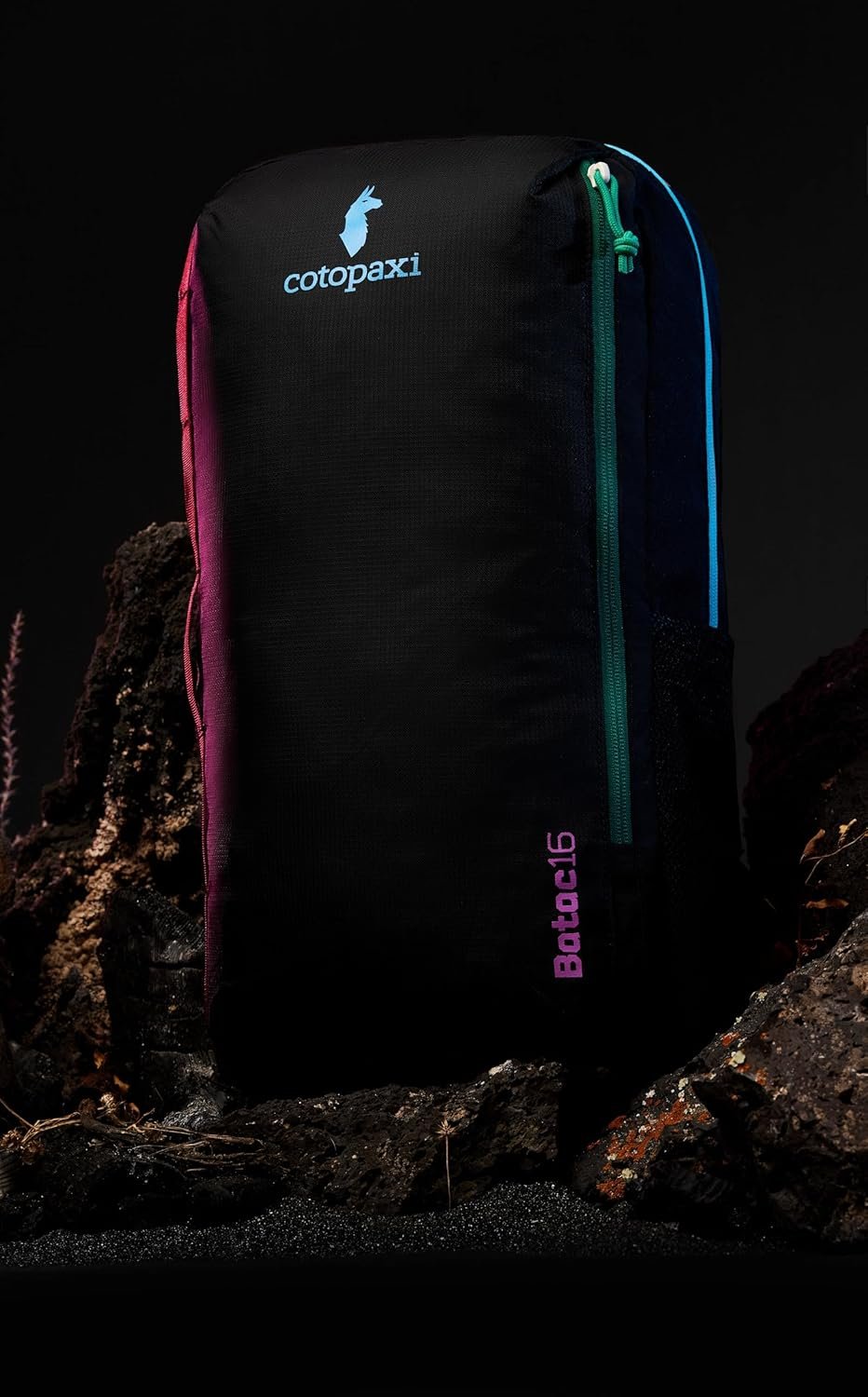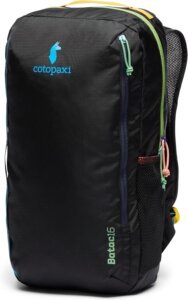Best Hiking Boots of 2025: Tested on Real Trails
After testing hiking boots across hundreds of miles and varied terrain, here are the ones that actually deliver on their…
The Cotopaxi Batac 16L bridges the gap between urban daypack and trail-ready hauler. After six weeks of daily use and weekend hikes, here’s how this $90 pack performs in real-world conditions.

I’ve been rotating the Cotopaxi Batac 16L into my daily routine for six weeks now—commuting to work, weekend hikes, and a three-day trip to Portland. At $90, it sits in an awkward middle ground between budget daypacks and technical hiking packs, which made me skeptical at first. Turns out, that’s exactly where it excels.
The Batac uses 420-denier ripstop nylon that feels tougher than most daypacks in this size range. I’ve scraped it against brick walls, tossed it on concrete, and stuffed it under airplane seats without any visible wear. The fabric has a slightly textured feel that sheds light rain well enough for quick walks between buildings, though I wouldn’t call it waterproof.
Zippers are YKK throughout, which is what you’d expect at this price. They’ve been smooth and reliable across dozens of uses. The main compartment zipper is two-way, letting you access the bottom without digging through everything on top—a small detail that matters more than you’d think.
 The shoulder straps are well-padded without being bulky. I’m 5’10” with a medium build, and the fit works perfectly for both a t-shirt in summer and a jacket in fall. The sternum strap is adjustable and actually stays put, unlike cheaper packs where it slides down constantly.
The shoulder straps are well-padded without being bulky. I’m 5’10” with a medium build, and the fit works perfectly for both a t-shirt in summer and a jacket in fall. The sternum strap is adjustable and actually stays put, unlike cheaper packs where it slides down constantly.
There’s no waist belt, which makes sense for a 16-liter pack. You’re not carrying enough weight to need one, and it keeps the profile clean for urban use. The back panel has some padding but isn’t heavily cushioned—fine for a light load, but you’ll feel heavier items pressing against your back.
The 16-liter capacity hits a sweet spot. It’s large enough for a 13-inch laptop (there’s a dedicated padded sleeve), a water bottle in the side pocket, lunch, a light jacket, and miscellaneous daily stuff. On day hikes, I’ve carried a 2-liter hydration bladder, snacks, first aid kit, and an extra layer without feeling cramped.
The front organization pocket is shallow but functional. I keep pens, chapstick, and my keys in there. It’s not designed for extensive organization—no key clip or multiple compartments—but that simplicity keeps the pack lightweight.
Side water bottle pockets are stretchy mesh that works great for standard 32-ounce bottles. They don’t secure bottles tightly though, so I’ve had a Nalgene fall out when the pack tipped over. Minor annoyance, but worth noting.
For commuting, the Batac disappears on your back. It’s not screaming “outdoor gear” with excessive branding or technical features, which I appreciate when heading into meetings. The dark colorway (I have the Del Dia version with mixed panels) works equally well on trails and in coffee shops.
On hikes, it handles day-trip essentials without issue. I did a 10-mile loop in the Catskills with this pack, and it performed as well as my larger hiking-specific packs for that distance. The lack of external lash points limits your ability to strap gear to the outside, but for most day hikes, you won’t need that.
One surprise: the pack compresses well when not full. Empty or lightly loaded, it doesn’t maintain a boxy shape like some packs. That’s great for tossing it in overhead bins or under seats on planes.
There’s no hip belt, which limits this pack for heavier loads or longer trips. No external compression straps either, so you can’t cinch down the load. And if you’re someone who needs extensive organization with multiple pockets and compartments, you’ll find this pack too simple.
The water bottle pockets could use more retention. A simple elastic cord across the top would solve the occasional bottle-falling-out issue.
At $90, the Batac costs more than basic daypacks but less than technical hiking packs. You’re paying for Cotopaxi’s build quality, thoughtful design, and the brand’s sustainability focus. If you want one pack that handles both daily commuting and weekend hikes without looking out of place in either setting, that premium makes sense.
If you only need a daypack for urban use, cheaper options exist. If you’re doing serious multi-day backpacking, you need something bigger with more features. But for people who blur the lines between city and trail, the Batac fills a gap that most packs miss.
The Batac has become my default grab-and-go pack. It’s not perfect—I still wish the water bottle pockets had better retention—but it handles everything I throw at it without complaint. The build quality feels like it’ll last years, not months, which justifies the higher price tag.
It’s the kind of pack that doesn’t do anything revolutionary but gets all the basics right. Sometimes that’s exactly what you need.
Best for: Daily commuters who hike on weekends, minimalist travelers, people who want one versatile pack
Skip if: You need extensive organization, want a budget option, carry heavy loads regularly
After testing hiking boots across hundreds of miles and varied terrain, here are the ones that actually deliver on their…
The MalloMe mess kit delivers lightweight, compact cooking for backpackers who need the basics without the premium price tag. Here's…
The Coleman Sundome 4-Person Tent delivers reliable shelter for family camping without breaking the bank. Here's how it performed across…
October 13, 2025
October 13, 2025
October 13, 2025
Get the latest gear reviews and camping tips delivered to your inbox.